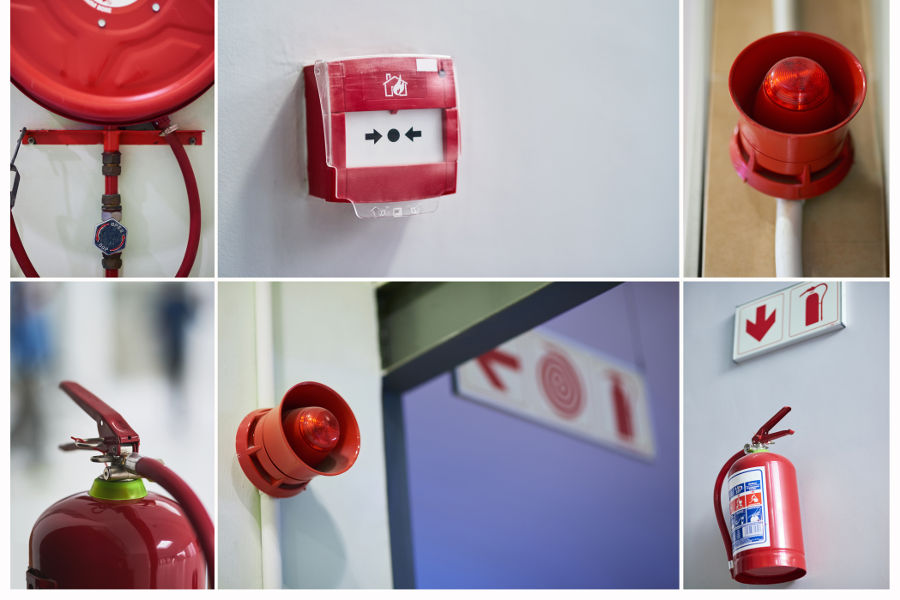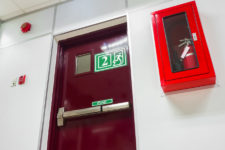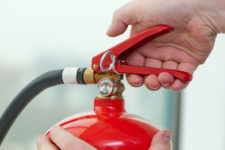The FDNY has proposed new standards for fire and non-fire emergency drills at specific buildings.
In an effort to inform the public about safety information related to fire and non-fire emergencies, the FDNY is proposing a new rule (401-07) to set standards, requirements, and procedures for conducting building drills.
Which buildings does this rule apply to?
- Office buildings, hotels, and all other Group B and Group R-1 occupancies required to have:
- an Emergency Preparedness Plan, and;
- a Fire and Life Safety (FLS) director
- or a Fire Safety Director transitioning to an FLS director
- All homeless shelters similarly required to have an FLS director or a Fire and Emergency Preparedness coordinator
- The FDNY will also encourage voluntary compliance with this rule for other occupancies conducting fire and/or other emergency preparedness drills
Still unsure about whether or not your building is required to follow the proposed rule (as opposed to voluntary compliance)? Chapter 4 of the 2014 Fire Codes defines occupancies required to have the above plans and directors.
What is a non-fire emergency?
- An actual or threatened hazardous materials release (including carbon monoxide)
- Area power blackout or building power failure
- Active shooter, civil disturbance, terrorist action, or other law enforcement incident
- Medical emergency
- Weather emergency or other natural disaster
- Emergency that affects the premises or the safety of the building occupants
Who, when, and how?
Drills must be conducted by Certificate of Fitness holders – specifically, those who are certified to be FLS directors, FEP coordinators, or drill conductors. If the training is held by a drill conductor in buildings where FLS/FEP’s are required, it must be “personally supervised” by the FLS director or “generally supervised” by the FEP coordinator.
Trainings must be scheduled to maximize participation of building occupants. Frequency is defined in the previously published FC Table – 401.7.6. You can view different requirements for each occupancy/building type on page 112.
Drills must be conducted through “live instruction,” with the recommended use of visual aids (we’ll get into more specifics about these later). Under subsection (c), drills must be conducted in person on each floor, and may be conducted in conference rooms (to allow use of video/other visual aids). At a minimum, the drill area must be conducive to “effective communication,” where everyone can see and hear the presenter.
What’s generally included in the presentation?
Per the proposed rule, “The Department encourages owners and their emergency preparedness staff to make fire and non-fire emergency drills more engaging and relevant to building occupants,” making the information relayed in the presentation more memorable. Here’s what that means exactly:
- Presentations should be tailored to each building
- Visual enhancements like floor plans, signs, and photographs/video should be included
- When possible, reference actual fires or non-fire emergencies (including ones that received public attention), and any lessons learned from the incidents
What’s specifically included in the drills?
The proposed rule lays out very specific requirements for introductions, fire specific drills, and non-fire emergency drills. Instructions are given for different types of buildings, equipment, and more. The rule also very clearly lists out what records must be maintained following each drill.
Specific training instructions for medical emergencies and active shooter emergencies are also detailed within the rule.
What about combined drills?
Per this proposed rule, “The Department is not implementing the combined drill provisions of FC401.7.2 at this time.”
This means fire drills and emergency action plan drills shall be conducted on separate dates, as required by building types/accepted department plans.
What about those in need of assistance?
For any building occupants that have identified themselves as in need of assistance (having disabilities or functional/other special needs which would require assistance in the event of emergencies) should be encouraged to participate in drills.
Participating in drills will help building staff understand and address their individual needs in advance of an emergency. If occupants requiring assistance are unable to participate in scheduled drills, alternative arrangements “shall promptly be made” to relay information presented during the drill, and to “evaluate whether and how their functional needs may be met.”
How can I give my feedback/thoughts on this rule?
The FDNY is hosting a public hearing at MetroTech Center on Monday, September 17th at 11 AM. You can attend the hearing to provide feedback on the proposed rule, or submit feedback via the city’s Rules page/ regular mail:
Code Development Unit, Bureau of Fire Prevention, New York City Fire Department, 9 MetroTech Center, Room 3N2, Brooklyn, NY 11201
As always, we’ll keep you posted on the rule’s status, along with any changes.



